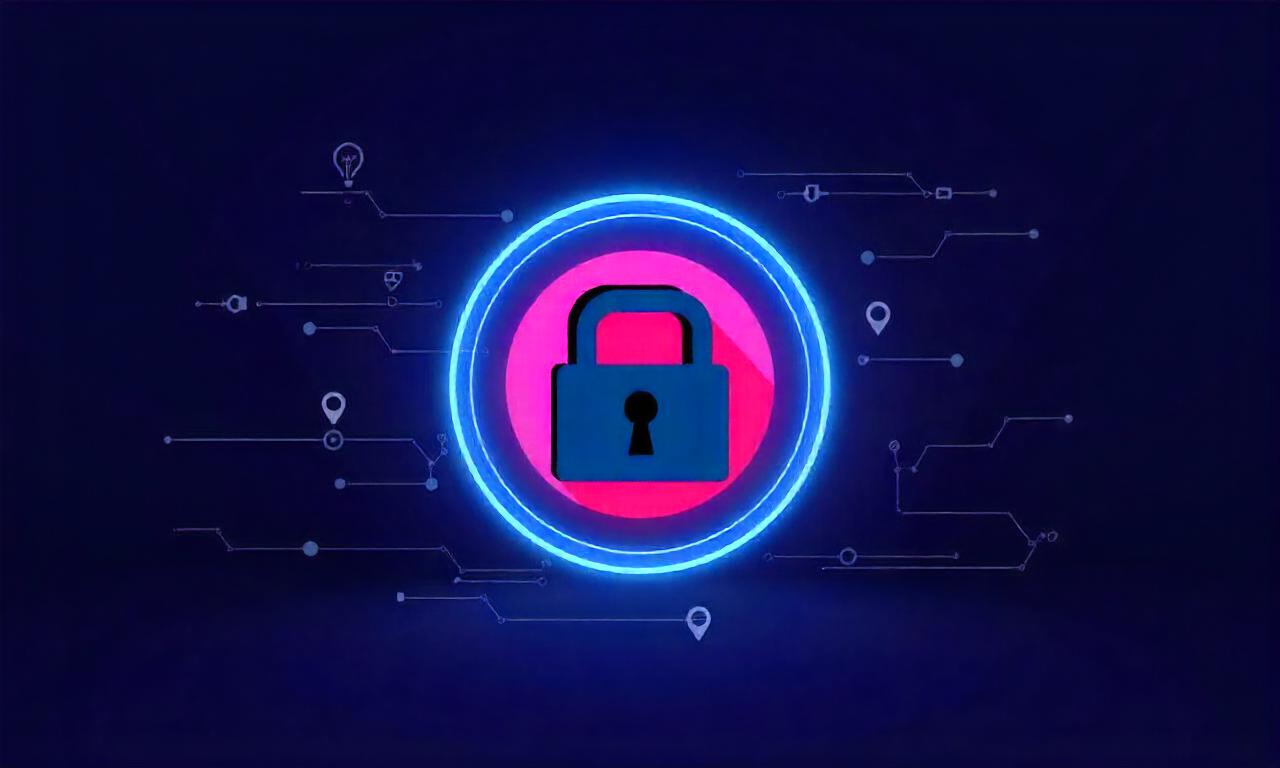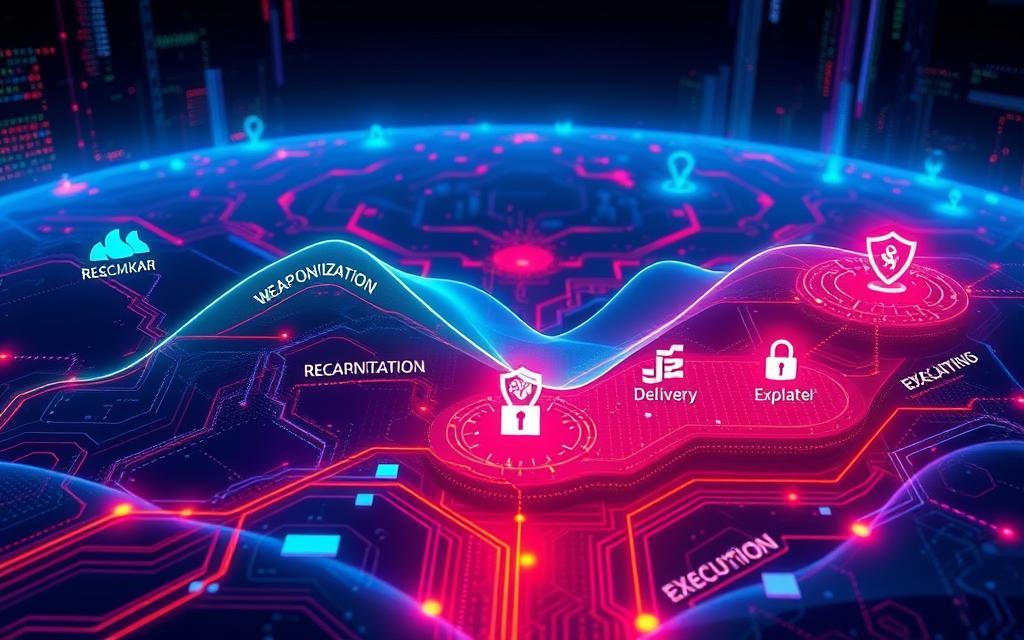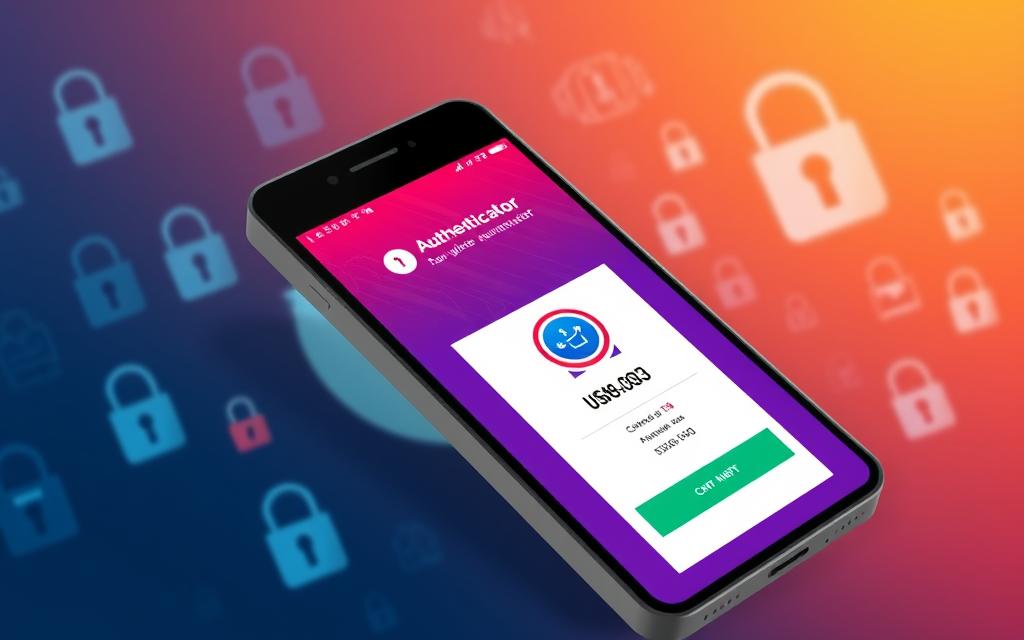As a cybersecurity pro, I know it’s key to stay ahead in protecting my team from new digital threats. That’s why I’ve looked into the U.S.T.A. Threat Intelligence Platform. It uses advanced methods to collect and analyze data from many sources, like the deep and dark web. This helps me see and act on cybersecurity threats fast.
The U.S.T.A. Threat Intelligence Platform brings together threat data from various places. This lets me make smart choices to strengthen my team’s security. With its detailed threat watching and special reports, I can beat cybercriminals and shield my team from cyber attacks.
Table of Contents
ToggleWhat Is a Cyber Threat Intelligence Platform?
In today’s fast-changing cybersecurity world, a cyber threat intelligence platform is key for staying ahead. These tools gather, analyze, and share the latest threat info. They help security teams spot, check, and act on threats right away.
Understanding Cyber Threat Intelligence Solutions
Cyber threat intelligence platforms pull data from many sources like open-source intel, industry reports, and internal logs. They give a full view of threats, helping teams defend against new cyber risks. These solutions look at the data, find patterns, and give clear advice to security teams.
These platforms help organizations stay ahead by catching and acting on threats early. With threat intelligence, security teams can make smart choices, focus their efforts, and protect their important assets well.
| Key Benefits of a Cyber Threat Intelligence Platform | Description |
|---|---|
| Real-time Threat Detection | Proactively identify and mitigate emerging threats before they can cause harm. |
| Actionable Insights | Receive tailored recommendations and strategic guidance to enhance security posture. |
| Improved Risk Management | Gain a comprehensive understanding of the threat landscape and make informed decisions. |
| Streamlined Security Operations | Automate threat intelligence gathering and analysis to optimize security workflows. |
Using a cyber threat intelligence platform, organizations can outsmart cybercriminals and keep their important data and assets safe.
Why Is a Cyber Threat Intelligence Platform Crucial?
In today’s digital world, a cyber threat intelligence platform is essential. Cyber threats are getting more common and complex. Organizations need tools to stay ahead of attackers. A strong cyber threat intelligence platform helps protect valuable assets.
One big advantage is how it makes handling threat data easier. It automates the process of collecting, analyzing, and acting on threats. This lets security teams focus on the most critical threats. It helps them respond faster and reduce the risk of cyber attacks.
Also, it gives a single place for all threat data. This helps security teams understand the threat landscape better. They can spot patterns, find new threats, and make smarter security choices. By using the platform’s insights, companies can take steps to protect themselves better.
The key role of a cyber threat intelligence platform is to keep organizations ahead. It automates threat data collection and analysis. This frees up security teams to tackle important threats and prevent attacks. This boosts an organization’s security and lowers the risk of costly cyber attacks.
| Importance of Cyber Threat Intelligence Platform | Benefits of Threat Intelligence Platform |
|---|---|
|
|
The Cyber Threat Intelligence Lifecycle
Dealing with cyber threats needs a structured plan. The cyber threat intelligence lifecycle is a process that keeps improving threat intelligence. It has different stages, each important for giving organizations the insights they need to stay safe.
From Data Collection to Continuous Improvement
The lifecycle starts with figuring out what intelligence is needed. Teams look at what info will protect their organization from cyber threats. This is the base for the next step: threat intelligence data collection.
Then, security experts collect data from many sources. These include open-source intelligence, dark web monitoring, and threat feeds specific to industries. This makes sure the information is both useful and up-to-date.
After collecting data, it goes through threat intelligence analysis. Analysts use advanced methods to find important insights, spot patterns, and find weak spots. This step is key to turning raw data into useful intelligence.
The last step is threat intelligence dissemination. The analyzed info is shared with important people, like security teams and top executives. This helps organizations make smart choices and take early action to stay safe.
But the cycle doesn’t stop there. Continuous improvement is a big part of the lifecycle. By learning from feedback and using new knowledge, organizations can make their threat intelligence better. This keeps them ready to adapt to new cyber threats.
Types of Cyber Threat Intelligence
Cyber threat intelligence comes in several types, each with its own role in keeping an organization safe. Let’s look at the main types and how they help in security.
Strategic Intelligence
Strategic intelligence gives a big-picture view of threats. It guides long-term plans and policies. It helps understand what cyber threats want, what they can do, and who they might target. This knowledge lets organizations make smart, long-term decisions.
Tactical Intelligence
Tactical intelligence is all about the methods cyber threats use. Knowing these methods helps security teams find ways to stop them. It’s about stopping cyber criminals in their tracks.
Operational Intelligence
Operational intelligence deals with threats right now. It helps teams respond quickly and protect against threats. It gives insights into what threats are out there, helping organizations act fast.
Technical Intelligence
Technical intelligence looks at the technical side of threats. It includes things like indicators of compromise (IoCs) and malware signatures. This info is key for setting up strong security measures against new threats.
| Type of Cyber Threat Intelligence | Purpose |
|---|---|
| Strategic Intelligence | Informs long-term decision-making and policy development |
| Tactical Intelligence | Enables the development of effective countermeasures and strategies |
| Operational Intelligence | Supports real-time response and mitigation efforts |
| Technical Intelligence | Provides essential information for implementing technical controls and defenses |
By using these different types of cyber threat intelligence, organizations can create a strong security plan. This plan keeps up with new threats and protects important assets.

Key Features of a Cyber Threat Intelligence Platform
Cyber threat intelligence platforms have key features that help organizations stay ahead of security threats. They gather data from many sources like open-source intelligence, industry reports, and internal data. This makes it easier to understand the threat landscape.
These platforms use advanced data analysis to turn this data into useful insights. This gives security teams a clear view of threats. Automation helps with tasks like threat detection and response, saving time and resources.
They are also scalable, handling more data as it grows and threats change. Easy-to-use interfaces and clear threat ratings help security experts quickly spot and deal with the most serious threats.
| Key Feature | Benefit |
|---|---|
| Data Aggregation | Consolidate intelligence from multiple sources, including open-source, industry reports, and internal data |
| Data Analysis | Transform raw data into actionable insights that inform security decision-making |
| Automation | Streamline critical security workflows, from threat detection to incident response |
| Scalability | Adapt to growing data volumes and evolving threat landscape |
| User-Friendly Interface | Empower security teams to quickly understand and prioritize critical threats |
| Intelligence Quality Ratings | Provide contextual insights to help security professionals make informed decisions |
Cyber threat intelligence platforms give organizations the tools and insights they need to stay secure. They help fight against the ever-changing cyber threats.
The Value of a Cyber Threat Intelligence Platform
Investing in a cyber threat intelligence platform can change the game for security operations centers (SOCs). These platforms boost the power of SOCs. They help automate and streamline security work.
Enhancing Capabilities of Security Operations Centers
Cyber threat intelligence platforms gather threat data from many sources. They turn this data into useful insights. This is key for SOCs to watch, find, and act on threats fast.
They give details on threats, risks, and how to fight them. They also share info on who might attack and how. This helps SOCs defend against cyber threats ahead of time.
These platforms do more than just help SOCs. They also share threat data with others. This keeps security systems updated for a stronger defense.
With a cyber threat intelligence platform, SOCs can automate many tasks. This makes their work more efficient. They can focus on the biggest threats. This leads to better threat detection, faster response, and stronger security.
| Benefits of a Cyber Threat Intelligence Platform |
|---|
| Enhances the capabilities of security operations centers (SOCs) |
| Provides real-time insights on current and future security threats |
| Facilitates the sharing of threat intelligence data with stakeholders |
| Enables the automation and streamlining of security processes |
| Improves overall security posture and resilience against cyber threats |
Cyber Threat Intelligence Platform: Stay Secure
In today’s fast-changing digital world, staying ahead in cybersecurity is crucial. The U.S.T.A. Cyber Threat Intelligence Platform offers a full solution to keep businesses safe from new cyber threats. It uses advanced data collection and top-notch detection to give clients detailed intelligence on threats, weaknesses, and enemy actions.
This platform’s focus on intelligence helps security teams know what threats might come next. This knowledge lets them act before threats happen, making their security stronger. It keeps them ahead of cybercriminals and protects their important data.
The platform’s core is about proactive defense strategies. It helps security experts make smart choices and act early. With updates in real-time and alerts you can customize, companies can keep up with cyber threats. This keeps their systems and data safe.
| Key Features | Benefits |
|---|---|
| Advanced data collection and analysis | Comprehensive, verified intelligence on the latest threats |
| Tailored threat intelligence reports | Contextual insights to enhance security decision-making |
| Real-time threat monitoring and alerts | Proactive defense against emerging cyber risks |
| Seamless integration with existing security tools | Streamlined security operations and improved efficiency |
Working with the U.S.T.A. Cyber Threat Intelligence Platform, companies can stay ahead of cyber threats. This lets their security teams prepare for, spot, and handle potential attacks. This smart approach is key to keeping a strong and safe digital setup in today’s fast-changing threat world.
Integration and Automation for Seamless Experience
Organizations need a top-notch cyber threat intelligence platform to keep up with cyber threats. The U.S.T.A. Threat Intelligence Platform offers just that. It gives valuable threat insights and makes integrating with security systems easy. This helps security teams act fast and with confidence.
Complete API Integration and Dedicated Analyst Support
The U.S.T.A. Threat Intelligence Platform has strong API integration. This lets organizations get threat intelligence in their preferred format. It goes straight into their security systems and workflows. This makes it easy for security teams to use the latest threat data in their decisions.
But there’s more. U.S.T.A. also offers dedicated analyst support. This means organizations get the latest threat insights and expert advice on using this intelligence. Together, these features help security teams improve their threat response and make their cybersecurity stronger.
The U.S.T.A. Threat Intelligence Platform combines cyber threat intelligence platform integration, automation features, and analyst support. This creates a comprehensive and easy-to-use experience. It gives organizations the tools and advice they need to stay safe from cyber threats.
Conclusion
Exploring cyber threat intelligence platforms shows their big impact on today’s cybersecurity. These tools are key for giving companies the knowledge and tools to fight cyber threats. They help predict, spot, and act on threats before they happen.
The U.S.T.A. Threat Intelligence Platform is a great example. It uses advanced data analysis to give clients detailed intelligence. This helps them make smart choices and improve their security. By being proactive, they can protect against attacks and keep their important assets safe.
As cyber threats get more complex, it’s vital to invest in strong cyber threat intelligence platforms. This is true for both small businesses and big companies. Having the right intelligence is crucial for staying safe online. By using these tools, companies can stay ahead of threats and protect their data.
FAQ
What is a cyber threat intelligence platform?
A cyber threat intelligence platform is a tool that helps understand cybersecurity threats. It collects data from many sources like the internet, reports, and logs. This gives organizations a full view of the threats they face.
Why is a cyber threat intelligence platform crucial?
These platforms are vital for all kinds of organizations. With more and more cyber threats, it’s key to quickly gather and act on threat data. This helps keep security strong.
What is the cyber threat intelligence lifecycle?
The lifecycle of cyber threat intelligence is a cycle of improvement. It starts with setting goals, then collecting and processing data. Next, it’s analyzed and shared. Finally, feedback is used to make things better.
What are the different types of cyber threat intelligence?
There are several types of cyber threat intelligence, each with its own role in security. These include strategic, tactical, operational, and technical intelligence.
What are the key features of a cyber threat intelligence platform?
Good cyber threat intelligence platforms have many features. They collect and combine data, analyze it deeply, automate tasks, scale well, have easy-to-use interfaces, and rate intelligence quality.
How do cyber threat intelligence platforms enhance the capabilities of security operations centers (SOCs)?
These platforms boost SOCs by bringing together threat data from many sources. They turn this data into useful insights. This helps SOCs automate, streamline, and make their security work easier.
How does the U.S.T.A. Threat Intelligence Platform help organizations stay secure?
The U.S.T.A. Threat Intelligence Platform gives organizations the tools and insights they need to stay safe. It uses advanced data collection and detection to offer detailed, verified, and specific intelligence on threats, vulnerabilities, and enemy actions.
How does the U.S.T.A. Threat Intelligence Platform integrate with an organization’s existing security infrastructure?
The U.S.T.A. Threat Intelligence Platform works well with an organization’s current security setup. It does this through comprehensive API integration. This lets users get threat intelligence in the format they want, right into their security systems and workflows.
















